A couple of days ago, I sat down with Dario-Jacopo Laganá in Mitte to talk about We Will Forget Soon, his project documenting the traces of the Red Army in Germany. I bought a copy of the book We Will Forget Soon, and we scheduled a short talk since I wanted to ask him some questions about the places he visited and all the pictures we took.
We talked briefly about his blog, Elephant in Berlin, history, gentrification, our memories of the city, and the relationship between the Soviet Union and DDR during the Cold War. After that, I asked him if he would be willing to do an interview about the book. I was glad he said yes, and below, you can learn more about this fantastic project.
But before we go into the interview, I have to explain a little more about We Will Forget Soon and why I believe you should buy a copy of the book before it’s too late.
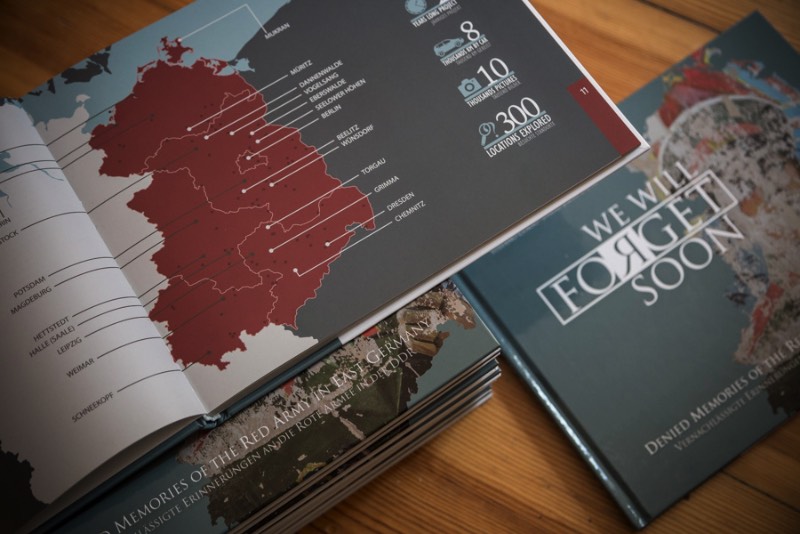
Growing up in Brazil, the Red Army was something out of movies. I don’t remember learning anything about them and what they did during the Second World War in any history classes I had in my school year.
My first confrontation with my ignorance happened when I visited the Soviet Memorial in Treptower Park. That place sparked something inside me, and I started researching the history of Berlin and what had happened in the city during the last century. That investigation changed a lot about what I believe today.
The Red Army occupied East Germany from the day that Nazi Germany surrendered, back on May 8th, 1945. Berlin was still in flames, and the Soviets were creating the Soviet Occupation Zone that, a few years from that day, would split the city with the Berlin Wall.
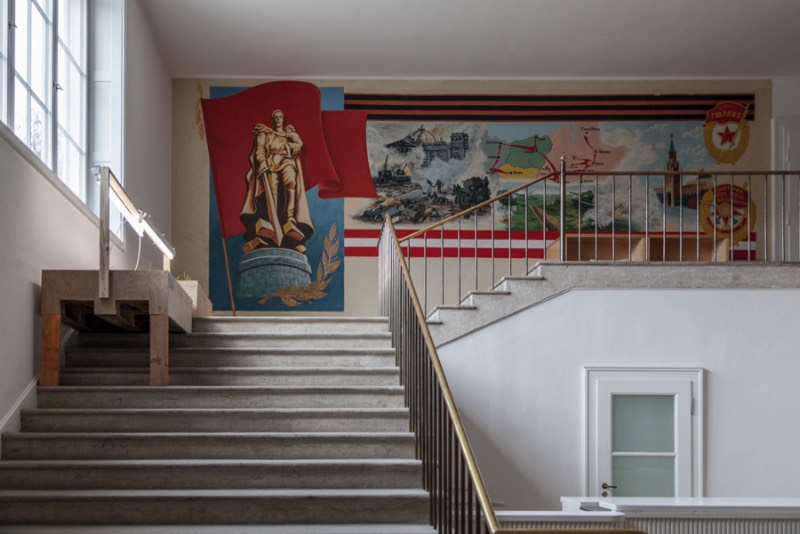
According to the Potsdam Treaty, the Soviet Union took care of the eastern part of Germany and a big chunk of Berlin. In October 1949, the Soviet Occupation Zone became the German Democratic Republic, but the Red Army stayed. They only left a few decades later. On June 25th, 1994, the Russian Ground Forces left Germany, and at the end of August 1994, there was a parting ceremony in Treptow Park to mark the end of the military presence in Germany.
But what would be done with the Red Army’s military presence in Germany? What would be done with their camps and installations? Some went to the German Army, some went to civil authorities, and some were just abandoned.
These were the places that Stefano Corso and Dario-Jacopo Laganá decided to document to come up with We Will Forget Soon. They traveled more than 8,000 km by car across former East Germany and visited more than 200 retired military locations. All of this generated 10,000 photos and a book.
Below, you can learn more about it from Dario itself.
We Will Forget Soon, an interview.
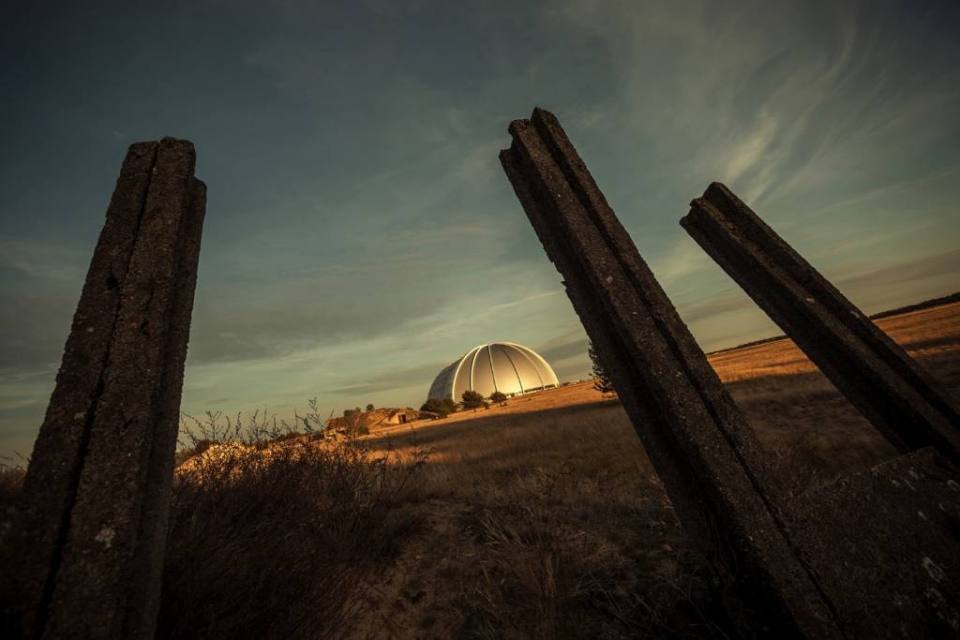
The first question must be about the reasons behind this project since the Red Army and the Soviet Union have been touchy subjects until today. So, how did you start thinking about documenting their presence here in Germany, and how did people around you react when they learned about this new hobby of yours?
Several coincidences were playing altogether. I’ve always been interested in the history of Europe and the relationships between countries (at the beginning, I started with the Italian-German one during WWII). I moved to Berlin, which is, on this topic, an active place full of possibilities. From these opportunities, I started to explore the city with Stefano and some other friends, and then we started going to Brandenburg, looking for abandoned places.
But then, my need for knowledge was more substantial than just exploring abandoned places. I need to understand what was going on, building by building, recognize the relationship between places and history, the use of the areas, the propaganda behind it, and the connection with the Cold War as we know it (growing up on the other side).
The idea that two Italians were researching this topic at the beginning was not easy; the idea that two outsiders were interested in a part of German history that was left in the shadows was hard to explain. But in the long term, it was a winning point. We had no personal background; we were not Wessi nor Ossi, so we could just research without the idea that we wanted to criticize one part or another, and in the end, we were just photographers, not historians.
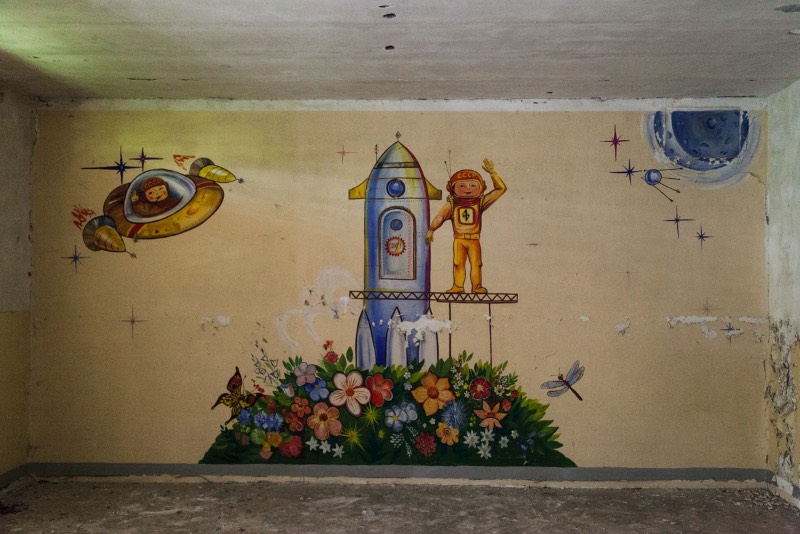
Your book is not about the abandoned places the Red Army left behind. How hard was it researching these locations and looking for them afterward?
Maybe today, the general situation on abandoned places has changed, but it was straightforward to go around and look for places at the time. Several of these places were well known, and we had a car, an excellent opportunity to see around. But then, the research passed from the abandoned to the reused ones, which was much more complex and challenging to achieve. Most places have no traces of the presence of the Soviet Army.
Looking at them, it’s almost impossible to say it, so we call the book We Will Forget Soon not because we don’t want to remember, but because as fast as the change in these areas is, it is already challenging to say what was part of this history and what was not.
So, a part of the research has been made with satellite maps, historical books, documents with the locations, and some internet forums where the Soviet soldiers are still used to remember their special time in the DDR.
The Red Army was stationed in Germany for a long time, but there is almost nothing to remind us of their presence here. The British army was here long ago, but you can still visit the Gatow Airport and see what they did in Berlin. Why do you think everything is different with the Red Army?
I must say that I don’t agree 100% with this theory; in fact, the Soviet Memorials in Berlin are more famous than Gatow, maybe just because one is in Tiergarten, but also the one in Treptower Park is very well known. But history has indeed treated the Soviets differently – although they were the ones who defeated the Nazis in most of the country and Berlin in particular.
The end of the Cold War also marked the idea that Germans wanted to quickly forget about them and move on to a reunified country, and 40 years of forced friendship left a dark mark on their souls. From a purely historical point of view, after Die Wende, the 3+2 Agreement committed Germany to pay the expenses to bring the Soviet troops back home. Of course, they got back everything possible, everything from the barracks and the frames from the windows.
This is also why there are fewer traces of the Soviets.

Of course, how hard was it to confirm your research after finding out about some places? Was there any place you couldn’t prove even though you knew the Red Army was there?
If you conduct profound research on the topic, most places are already on some maps, maybe not all the buildings, but the extensive barracks, not with addresses, but with names and references to the closer town. To confirm, you need to go there and look for traces and sometimes a triangulation of documents.
Some small local events in newspapers (usually the tragic ones were reported), some comments on a forum, and a picture where you can see the building in the background of a military group portrait. I’ve spent days and days looking for these details in photos). So what you find in the book has been confirmed. We’re not historians, but we try to give people consistent information.
There are some places that I would like to visit but were not possible, like some barracks still in use by the Bundeswehr or some other buildings that are closed. Unfortunately, the local authorities decided it was not enjoyable for them to give us access to pictures.
We can only imagine how challenging this project was. Did you have any official support from any German or Russian government or institution?
We are very proud of this project also because we managed to get some recognition and funds from the Bundesstiftung zur Aufarbeitung der SED-Diktatur (Federal Foundation for Refurbishment), which is a great national organization that helped us a lot.
I’ve been honored to speak with vital historians and heads of other foundations about this project, which was a key to opening more doors and being recognized as official.
Unfortunately, we also tried to contact Russian authorities, but we’ve been so lucky that maybe it was not the right time.

You visited more than 200 places all over East Germany. Was there anywhere that became your favorite place? And any place that you think more people should know about?
I’ve been around a lot, and somehow, I loved the small places in the middle of nothing where you could find some minor elements of this past, like just a statue in the forest.
A favorite place is the Festspielhaus in Dresden-Hellerau, which was restored and brought back to its original purpose of dance, performance, and contemporary art. But they decided to give the people the opportunity to get in touch with the past, leaving and restoring the Soviet paintings on the walls.
Far from there, but also the fascinating story, is the Lenin statue near Schwerin that the people from the area decided to restore and not destroy (as it happened everywhere else).
If anybody wants to know more about the subject, is there any book you could tell people to get?
There are several books, but most of them are in German. The most complete book on this topic is from Silke Satjukow – who also wrote the historical introduction to our book – “Besatzer. »Die Russen« in Deutschland 1945-1994”. It’s a beautiful book with many details, from a historical and military point of view, and the relationship between the countries.
Another one is “Roter Stern über Deutschland,” which is also a documentary film. However, if you go to flea markets, sometimes you still find some volumes of the “Mit der Sowjetunion für immer fest verbunden: eine Bilddokumentation,” a series of photo books made for the propaganda of the forced friendship between DDR and the Soviet Union, but that gives you a visual image of this story.

Like I said before, We Will Forget Soon is a fantastic book that documents a part of German history that most people don’t like to talk about but that needs to be told. Dario-Jacopo Laganá and Stefano Corso did a fantastic job with their book. Everybody interested in this part of history must have this on their bookshelf.
You can buy the book We Will Forget Soon and learn more about the project at wewillforgetsoon.com.
If you want to learn even more about the Soviet presence in Berlin, you must go to the Soviet Memorial in Treptow Park and celebrate their victory in the Second World War. I will be there on May 9th, 2017, and Dario will be there. You should find us, grab a beer, and we can talk about this fantastic project and Berlin.
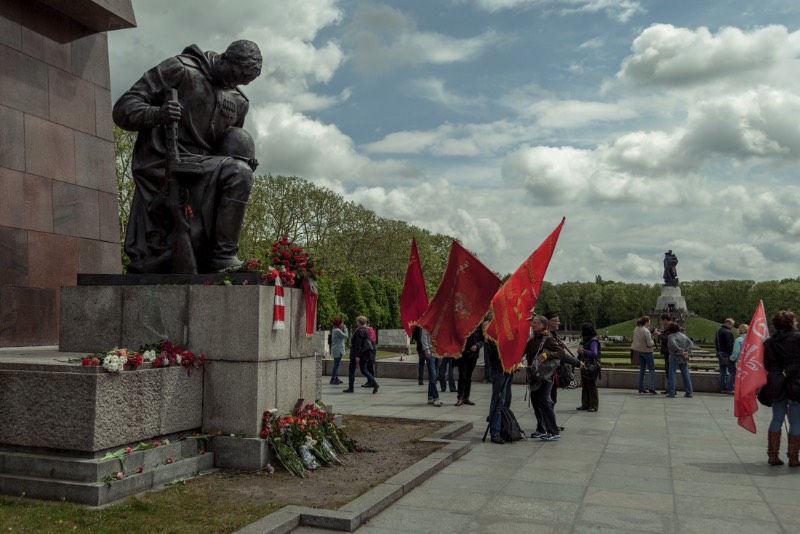
We Will Forget Soon: An Interview with Dario-Jacopo Laganá
Click here to buy We Will Forget Soon
All the pictures in this article were kindly provided by Dario-Jacopo Laganá, and you can see more of them on We Will Forget Soon.